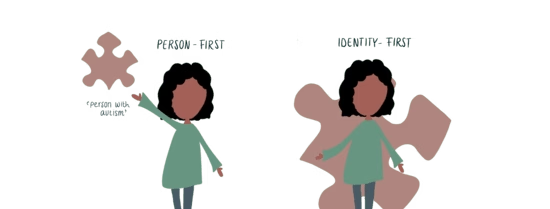TeachEUR
Support
Language and Disability: Why Wording Matters
Language plays a significant role when discussing disabilities, and the words we use can influence how individuals are perceived and understood. There are two main approaches to the language surrounding disabilities, each with its own advantages and critiques.
The person-first language prioritizes the person over the condition or diagnosis. For example, using "person with autism" instead of labeling someone as "autistic." This approach is commonly endorsed by international organizations and aims to emphasize the individual’s value beyond their disability. The key critique of person-first language is that it often frames disabilities as illnesses, which can inadvertently suggest that the person is defined by their condition or needs to be "fixed" or "cured."
On the other hand, identity-first language recognizes disabilities as an integral part of a person’s identity, embracing the idea that one's disability is an essential aspect of who they are. For example, using "autistic person" instead of "person with autism." Disability activists and scholars within disability studies often recommend this language, as it affirms the person’s experience and challenges societal norms that stigmatize disabilities. However, the critique here is that identity-first language might inadvertently lead to people being defined solely by their disabilities, limiting their broader identity.
So, what should you do? The best practice is to respect the preferences of individuals when referring to them, as different people may feel differently about the terminology. If necessary, justify your choice of language based on the context and the individual’s preference. It’s important to understand that there is no universally correct way to refer to a disability, as the language should align with both the person’s preference and the context in which it is used.
For further insights on the discussion surrounding these language choices, consider exploring this article.
Medical Model vs. Social Model in Education
In education, the medical model views disability as an individual problem, focusing on diagnosing and treating impairments. For instance, if a student with mobility challenges cannot access a classroom due to narrow doorways, the medical model might suggest that the student needs to adapt or be treated to overcome their limitations.
Conversely, the social model emphasizes that disability arises from societal barriers, and not only from the individual's impairments. Using the same example, this model would advocate for modifying the environment—such as widening doorways—to accommodate all students, thereby promoting inclusivity and equal access to education. The social model does not deny that bio-physio impairments may be debilitating per se (i.e. someone with chronic pain may be disabled because of that regardless of any social aspect), but it does emphasize the social conditions that can be ameliorated to include those who have an impairment.
Understanding these models is crucial for educators to foster an inclusive learning environment.

